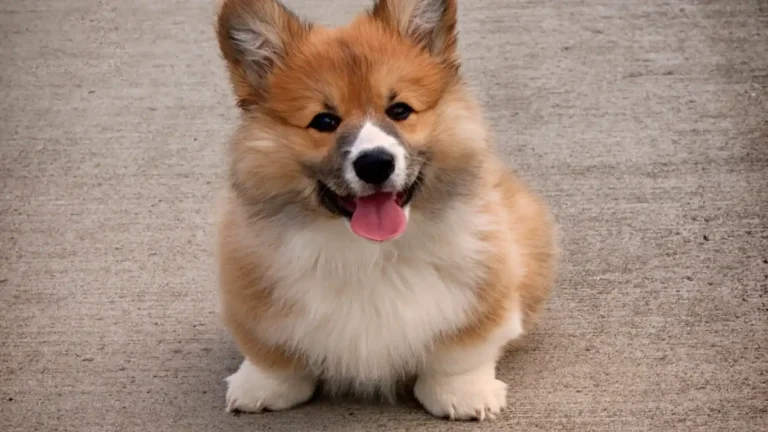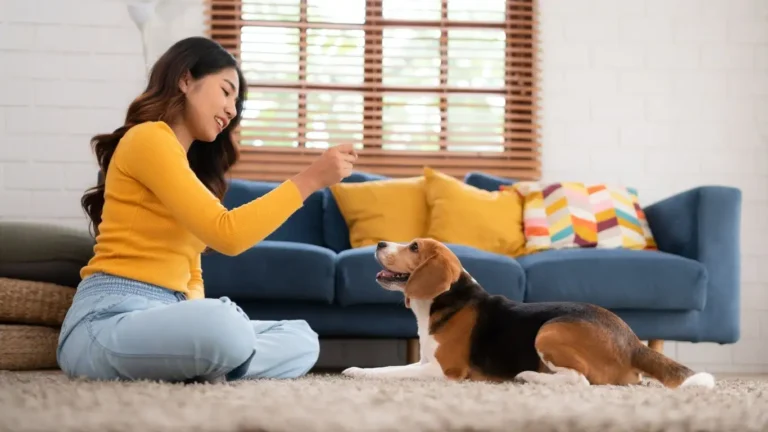Master How to Train a Dog to Wait Before Eating for Perfect Mealtimes
Training a dog to wait before eating is one of those fundamental skills that can make life with your dog a lot more enjoyable. Whether you’re dealing with an energetic puppy or a full-grown adult dog, getting them to wait before digging into their meal can teach them patience, improve their impulse control, and set a solid foundation for other types of training. In this post, I’ll walk you through the steps I’ve found most effective when training dogs for this particular behavior, and I’ll also share a bit of my own experience as a Canine-Assisted Therapy Trainer. Let’s dive in!
The Importance of Teaching Your Dog to Wait Before Eating

Before we even get into the “how” of training a dog to wait before eating, it’s important to understand why this skill is worth the time and effort. At its core, teaching your dog to wait for food can build stronger communication between you and your dog, establish boundaries, and foster a sense of calm during mealtime. Here are a few reasons why it’s a great idea:
- Promotes impulse control: Dogs, especially puppies, are often all about immediate gratification. By teaching them to wait, you’re encouraging them to think before acting.
- Improves manners: A dog that waits patiently before eating won’t jump on you or anyone else around when food is present. It’s a win-win!
- Enhances safety: If you ever have guests or children around, having your dog wait before eating reduces the chance of food-related accidents or confusion.
But there’s more to it. When a dog learns to hold off on food, they also learn to trust you as the leader of the pack. It’s a small but powerful way to establish respect and foster a bond built on mutual understanding.
Why Does My Dog Rush to Eat?
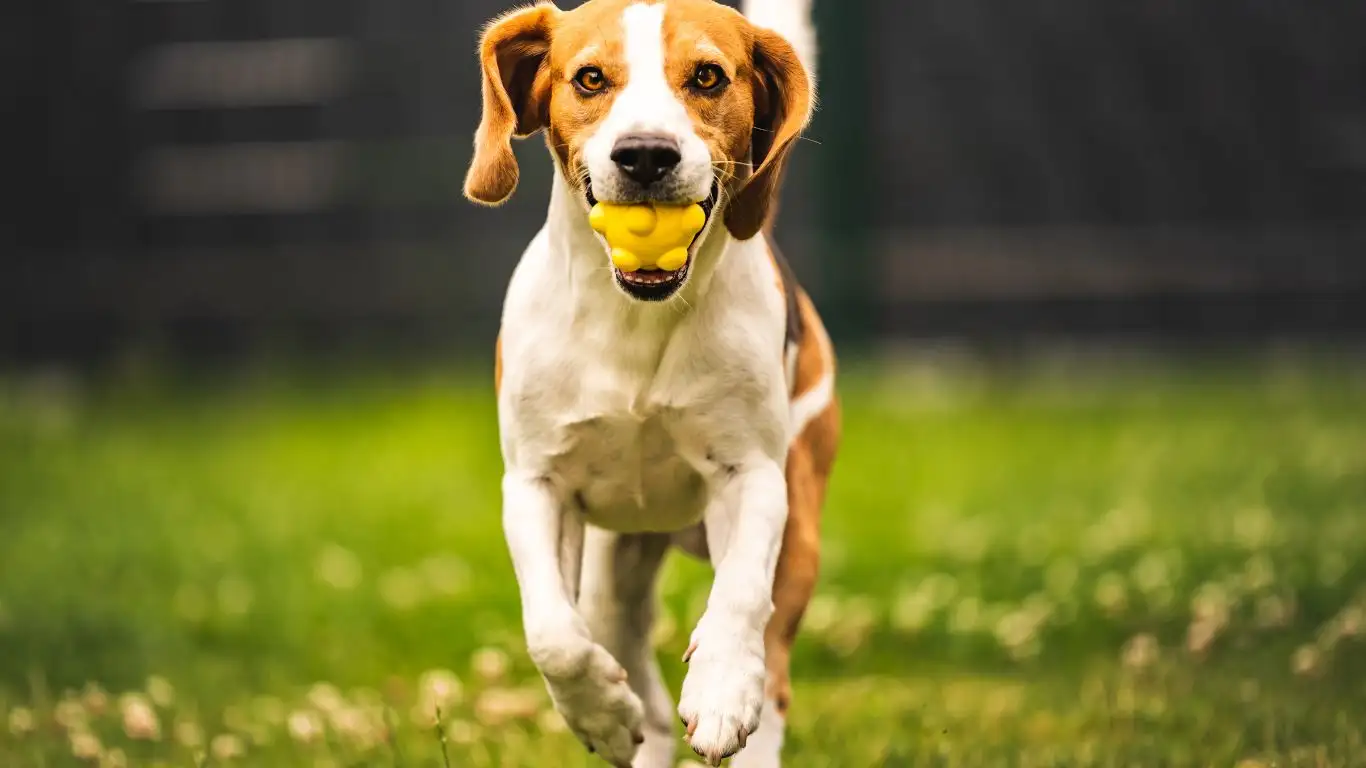
If your dog is the type to rush their meal the second it hits the floor, you’re not alone. Many dogs develop this behavior for a few reasons, and understanding the root cause can help you approach the training process more effectively. Here are some of the most common reasons why dogs rush their food:
- Instinctual behavior: In the wild, dogs have to grab their food quickly before it’s taken away by other animals. This primal instinct can sometimes carry over into domestic life.
- Previous experiences: If your dog was in a situation where food was scarce or they had to compete for meals, they might have developed a habit of rushing to eat out of fear of losing out.
- Excitement: Dogs are often very food-driven, and mealtime is one of their highlights of the day. Their excitement can cause them to act impulsively.
Once you understand why your dog rushes to eat, it becomes easier to train them to pause and wait. You’ll be better equipped to handle their impulses with the right approach and timing.
How to Train a Dog to Wait Before Eating
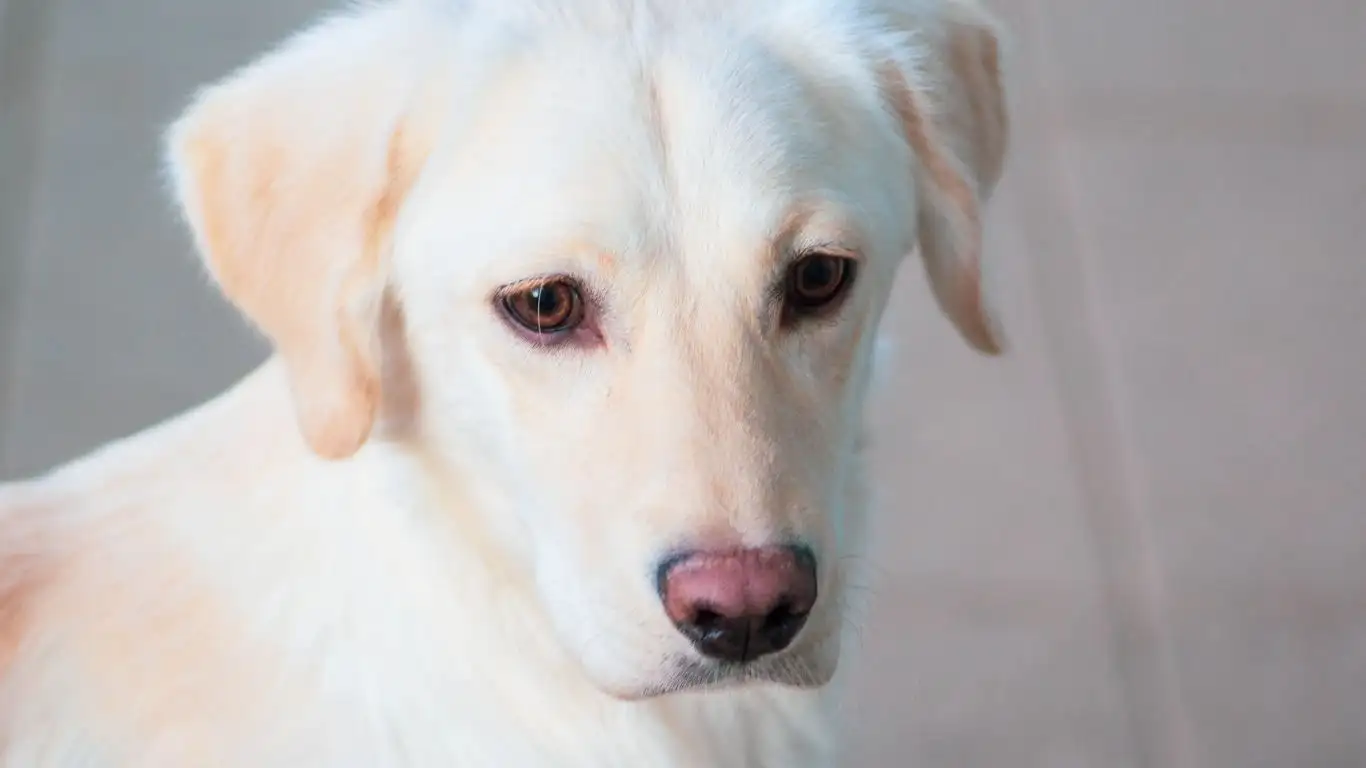
Now let’s talk about the practical steps. Teaching your dog to wait before eating isn’t a one-time trick; it takes consistency, patience, and positive reinforcement. But with the right steps, you’ll have your dog waiting calmly in no time. Let’s break it down into easy-to-follow phases:
Phase 1: Getting Your Dog to Focus
Before you can get your dog to wait, they first need to focus on you. This is a crucial step, especially if your dog is super excited about food. Start by holding the food bowl in front of them and let them sniff it, but don’t let them eat it just yet. At this point, it’s all about getting their attention.
Here’s a simple exercise to help:
- Hold the bowl in your hand, a few inches above the floor.
- As soon as your dog looks up at you instead of the bowl, say “yes” or “good” in a calm voice and reward them with a treat.
- Repeat until they consistently look at you before the food bowl.
Once your dog begins focusing on you instead of the food, it’s time to move on to the next step: introducing the “wait” command.
Phase 2: Introducing the “Wait” Command
Now that your dog can focus on you, it’s time to introduce the command that will help them understand they need to wait before eating. Here’s how to do it:
- Place the food bowl on the floor, but don’t allow your dog to eat just yet.
- Say the word “wait” in a calm and firm tone. Use your hand in a stop-motion as well if that helps.
- Wait for a few seconds (even if it’s just a few moments), then reward your dog for not rushing towards the bowl.
The key here is to start with small intervals and gradually increase the time your dog needs to wait. This builds their patience and reinforces the desired behavior.
Phase 3: Gradually Increasing the Wait Time

Once your dog is responding well to the “wait” command for a few seconds, it’s time to start gradually increasing the wait time. This step is all about building your dog’s patience and reinforcing the idea that good things come to those who wait. But don’t rush this process—be patient with your pup. Here’s how to proceed:
- Start with a short wait time, like 3 to 5 seconds, and reward your dog immediately after.
- Slowly increase the time, adding 1-2 seconds each time. The goal is to get your dog comfortable with waiting for longer periods.
- Always reward your dog when they remain calm and in place. A simple “good boy/girl” followed by a treat goes a long way.
- If your dog breaks the wait and starts moving towards the food, calmly reset and try again. Avoid getting frustrated—patience is key!
As your dog learns to wait for longer periods, you’ll start to notice they become more relaxed and focused. It’s a fantastic feeling to watch them hold that position with the food right there, showing off their newfound self-control!
Phase 4: Adding Distractions
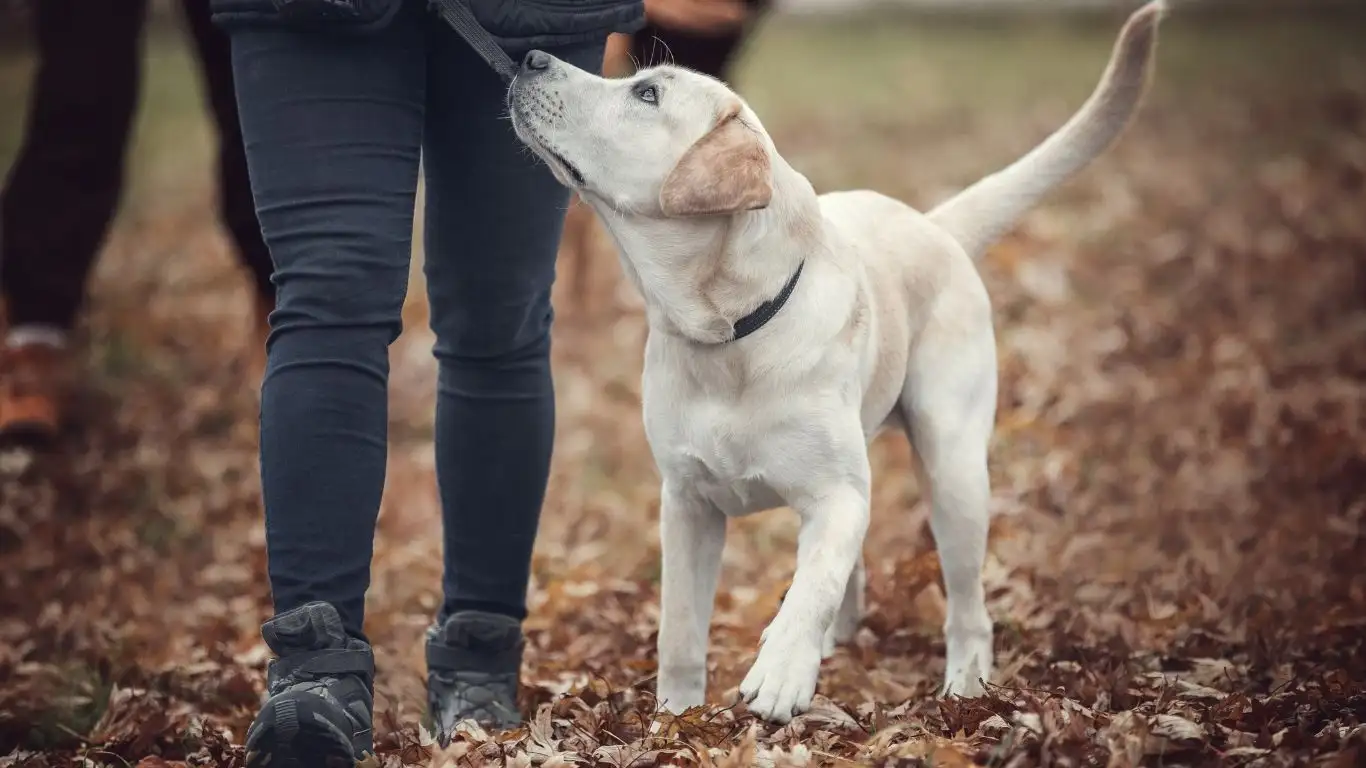
Now that your dog has learned to wait for a set amount of time, it’s time to add some distractions. This is where the training really gets fun—and challenging! The real world is full of distractions, so this step will teach your dog to hold their patience even when there’s a bit of chaos around them. Here are a few distractions you can introduce during the training process:
- Movement around the food bowl: Try moving the food bowl just slightly while your dog is waiting. This will help them stay focused even if the food is moving.
- Other people in the room: Have someone else walk around or talk near your dog while they’re waiting. This is especially useful if your dog is prone to jumping or running after people when they’re hungry.
- Noise: You can add sound distractions like clapping your hands or ringing the doorbell. The goal is to see if your dog can stay focused despite external stimuli.
Introduce one distraction at a time, and be sure to reward your dog for staying calm and in place. Start with simple distractions and slowly build up to more complex ones. Over time, your dog will learn to hold the “wait” command no matter what’s going on around them. It’s about teaching them that waiting is the best choice, no matter how tempting it may be to break the command!
Phase 5: Proofing the Behavior with Real-Life Scenarios
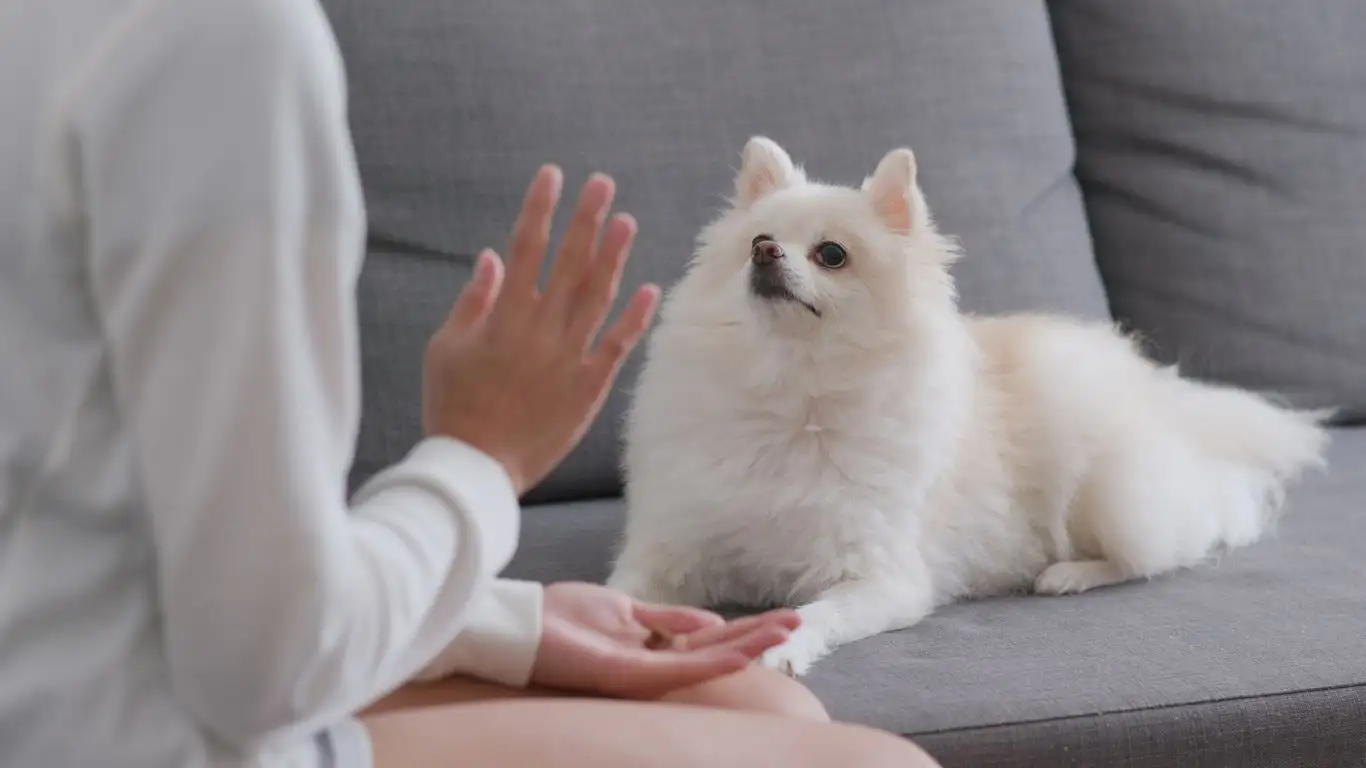
Now that your dog can wait patiently despite distractions, it’s time to put their new skills to the test in real-life situations. Real-life scenarios are the ultimate way to proof your dog’s behavior. It’s one thing for your dog to wait in a calm environment, but it’s another when there’s a lot of excitement or commotion around. Here’s how you can introduce real-life situations into your training:
- Feeding with family around: Try feeding your dog while other people are in the room. This will help them learn to stay calm and focused when there are distractions.
- Feeding during playtime: If you have other pets or children in the house, feed your dog while they are active nearby. This will teach your dog to stay patient even when there are more exciting things happening.
- Feeding outdoors: If you typically feed your dog outdoors or in a busy area (like a park or backyard), practice the “wait” command in these environments too.
Don’t forget to reward your dog every time they successfully hold the “wait” command in these real-life situations. Positive reinforcement is essential for reinforcing their behavior and encouraging them to continue following your cues.
Consistency is Key
Throughout all of these phases, remember that consistency is your best friend. It’s so easy to slip into the habit of letting your dog break the “wait” command because it seems like too much work. But trust me, taking the time to be consistent now will pay off in the long run. If you’re not consistent, your dog might get confused and start to break the behavior more frequently.
One thing I’ve learned from my experience as a Canine-Assisted Therapy Trainer is that dogs thrive when they know what’s expected of them. So even if it’s tempting to skip a training session or let them eat without waiting, stick to the process. It’s all about building that habit of patience and respect.
Common Challenges and How to Overcome Them
Training your dog to wait before eating might not always go smoothly. Like any skill, it takes time, and you might encounter some challenges along the way. Here are a few common hurdles and how you can overcome them:
- Short attention span: If your dog struggles to stay focused, try breaking training into shorter sessions. Dogs don’t need long training sessions to be successful. A few minutes at a time is often enough!
- Impatience: If your dog becomes impatient and starts to whine or paw at the bowl, keep calm and don’t give in. Wait for them to calm down before you reward them. This helps them understand that patience is key.
- Not understanding the “wait” command: If your dog doesn’t seem to get it, go back to basics and focus on rewarding small successes. Gradually build up from there, and be patient with the process.
Challenges like these are completely normal and part of the learning process. Just keep working with your dog at a pace they’re comfortable with, and celebrate each small success along the way!
Phase 6: Reinforcing the Behavior with Random Intervals

Once your dog has mastered waiting for longer periods, even with distractions, it’s time to take the training up a notch. To really reinforce the behavior and make it stick, you’ll want to introduce random intervals of waiting. This will ensure that your dog doesn’t just expect a fixed wait time but learns to stay in position until you give the signal to eat.
Here’s how to introduce random intervals:
- Start by having your dog wait for a fixed amount of time, like 10 seconds. Then, reward them with the food.
- Gradually introduce variability by varying the wait time between 5 to 15 seconds, and sometimes even a little longer. This unpredictability will keep your dog engaged and focused.
- Be sure to reward your dog immediately when they stay in place, regardless of how long the wait was. Positive reinforcement is key!
The goal of this phase is to get your dog to understand that waiting patiently will always pay off, but they can’t predict exactly when it will happen. This helps build their patience, focus, and trust in you as the leader.
Addressing Specific Behavioral Issues During Training
While most dogs will catch on to the “wait” command fairly quickly, some behavioral issues might pop up along the way. In my experience as a Canine-Assisted Therapy Trainer, I’ve seen a few recurring challenges that can make this training more difficult. Let’s dive into some common issues and how to solve them:
1. Food Aggression
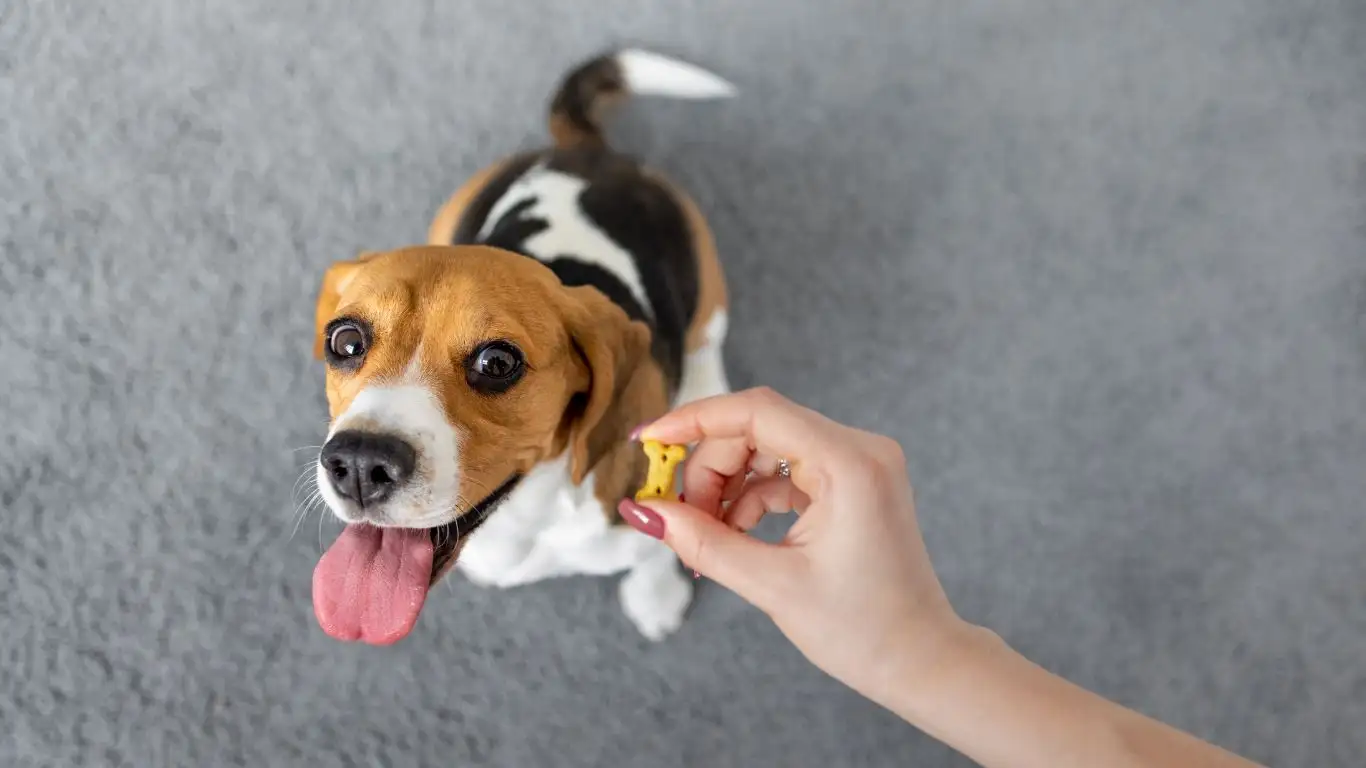
Food aggression is a real thing, and if your dog is possessive of their food, this can complicate the training process. If your dog growls, snaps, or shows other signs of aggression when you approach their food, you’ll need to tackle this issue before continuing with the “wait” training.
Here are a few strategies to address food aggression:
- Desensitization: Gradually get your dog used to you approaching their food bowl by rewarding them with treats while they’re eating. Start by standing far away and slowly work your way closer.
- Positive reinforcement: Reward your dog with a treat when they allow you near their food. This helps them associate your presence with something positive.
- Feeding in a calm environment: If your dog shows signs of food aggression, feed them in a quiet area with minimal distractions. This can help reduce stress and prevent aggressive behavior.
Once your dog has shown improvements with their food aggression, you can resume training the “wait” command. Keep in mind that this might take some time, so be patient and consistent.
2. Inconsistent Behavior
Another challenge you might face is your dog being inconsistent in their behavior. One day they wait calmly, and the next day they jump at the food bowl the second you put it down. This can be frustrating, but it’s completely normal, especially when your dog is still learning.
To fix this issue, focus on maintaining consistency. Here are some things to keep in mind:
- Same command, same outcome: Always use the same word and hand gesture for the “wait” command. Consistency in your language and cues is key.
- Reward consistently: Be sure to reward your dog every single time they wait, even if it’s only for a few seconds. This helps reinforce the behavior.
- Training duration: Don’t expect to train your dog for hours. Keep sessions short, around 5-10 minutes, and end them on a positive note.
Consistency in your expectations will help your dog understand what’s expected of them and reduce any confusion. Remember that training is a journey, not a race!
Additional Training Tips for Success
As you continue working on the “wait” command with your dog, there are a few additional tips that can help make the process easier and more effective:
- Use a cue word: In addition to saying “wait,” consider adding a cue word like “release” or “okay” to let your dog know when it’s time to eat. This adds another layer of clarity to the training process.
- Teach a release command: Once your dog has mastered the “wait” command, you’ll need to teach them the release command. This is the signal that lets your dog know it’s okay to eat. Be sure to reward them immediately when they break the wait command.
- Short training sessions: Keep training sessions brief and fun. Dogs, especially puppies, have short attention spans. A few minutes of focused training can be more effective than a long session that causes frustration.
Above all, make sure you’re having fun during the training process. Your dog can pick up on your mood, so if you’re feeling positive and confident, your dog will be more likely to follow your lead. Training should be a bonding experience, not a stressful one!
References and Further Reading
For more in-depth information on dog training, I highly recommend checking out these trusted sources:
- American Kennel Club (AKC) – Your go-to resource for dog training tips and advice.
- PetMD – A reliable source for pet health and training advice.
- National Institutes of Health (NIH) – For understanding canine health and wellness from a scientific perspective.
These resources provide great insights into training, behavior, and health, so you can continue your dog training journey with confidence.
Disclaimer
The information provided in this article is based on my personal experience as a Canine-Assisted Therapy Trainer, as well as general dog training principles. While these techniques work well for most dogs, every dog is unique, and some may require additional or different approaches. If your dog has severe behavioral issues or you encounter challenges you can’t resolve, consider seeking the help of a professional dog trainer or behaviorist. Always consult with a veterinarian for health-related concerns.


